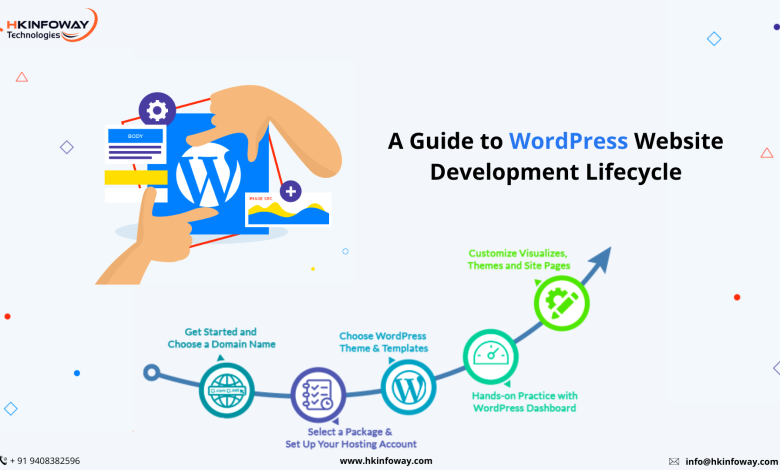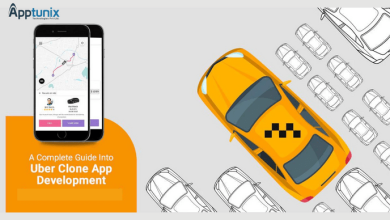A Guide to WordPress Website Development Lifecycle

Currently powering 14% of the top 100 websites in the world, WordPress is the most popular CMS for website development. What is more incredible about WordPress is that it allows any layman to build websites on the go, which small businesses often find convenient. However, if you want your website to be of higher quality, hire a WordPress developer online or from your local agencies for your project.
A professional will ensure all your business requirements meet efficiently and rapidly. They will also carry out your web development project in a definite lifecycle to streamline the process, which a newbie with a DIY approach might not know about. However, even though you are taking the help of a professional, you still need to have a good idea of a WordPress Website development lifecycle.
This allows you to get a good understanding of your web development work and plan effectively. So, let’s get started.
Website Development Cycle of WordPress
Project Initiation
Project initiation starts after the company and client agree and sign a contract. Company representatives converse with clients to determine what clients want to achieve with their WordPress website. This includes:
- General project goals
- Design requirements
- Website data details
Once this has been determined, a project plan can be established. This project plan entails the client’s design and development requirements. Many helpful project management tools help developers develop and carry out effective strategies.
WP Project Manager:
This free WordPress project manager plugin can be used to manage projects within your WordPress system.
CQPIM WordPress Project Management:
This is a premium plugin available on CodeCanyon with various features.
Upstream Project Manager:
Upstream is another free project manager that makes managing any project easier within WordPress.
Design
The visual aspect plays a vital role in the success of your site. The design team works to realise the client’s ideas in the design phase through wireframing and mockups. A good design team brings technical know-how and creativity to deliver a good design. In addition, they ensure the app looks stunning and clutter-free, keeping mobile-friendliness in mind.
There are a few elements that make a WordPress website beautiful and functional.
Layout:
The layout should be clean and clutter-free. It should help your visitors focus on content without any distractions. So, limit the use of pop-ups, animations, and advertisements.
Images:
Incorporating the right images clicked by professional photographers really pays off. There are some platforms for getting stock images:
- Flickr creative commons
- Unsplash
- Stock.xchng
- Shutter stock
- Getty Images
Logo:
The logo is an essential representation of your brand. Hence, it should be easily recognisable to your site visitors.
Fonts:
A good choice of fonts makes website copy more legible, and the site appears more professional. The fonts should be aesthetically pleasing and readable, which means no eccentric fonts. Helvetica, Arial, and Georgia all make good choices.
Colours:
The simpler the colour scheme, the better it looks. Use two neutral shades like black and white or grey and white with a brighter highlight colour to complement them.
Data Migration
The client might be migrating from another CMS or looking for a new WordPress install. Data migration will be part of the development lifecycle in cases like this. Data migration starts with the client providing developers with access to their database. Next, developers merge data mapping documents, write data migration scripts and start the import process.
After initial importation, the developer’s team carries out a quality assurance review to ensure everything has been performed correctly.
To make a data migration smoothly, here are some tips to consider:
- Don’t forget to check your backup file before starting the migration.
- If you are installing the new WordPress server, make sure you keep the original website live at the time of migration so that you can always go to the older site to prepare a new backup file if anything goes wrong.
- Only update the DNS (Domain Name System) when migration is complete.
Development
Soon after the team gets design approval, the development phase starts. The development team will build custom features and functionalities per the client’s requirements.
Theme / Design:
Developers and designers collaborate to create the design approved by the client. Then, depending on the budget, either the entire theme is created or tweak the existing one from the WordPress marketplace. A custom builds unique theme is always recommended over the existing ones edited because a unique theme will market your brand and product or services effectively. On the other hand, an edited template theme may make your site look like thousands of others in the market.
Functionality:
Functionalities are easier to implement using plugins. However, adding too many plugins also hampers the performance of your site. This is because each plugin has to retrieve relevant data from the site database. And when many of them try to perform their task simultaneously, some conflict can occur and make your site slow down.
Moreover, some plugins may also cause security risks. Free plugins are always riskier than paid ones, especially in eCommerce website development, where the site has to deal with critical transnational data of the users. So, for all these reasons, developers review custom functionalities and make recommendations on whether to build a plugin from scratch or leverage the existing one.
Quality Assurance (QA) & User Acceptance Testing (UAT)
Once the development tasks end, it’s time to perform quality assurance testing. Depending on the project development model, sometimes development and testing go hand in hand. Testing is an important phase in the website development process as it ensures that all the functionalities are working properly.
In this phase, the developers perform various testing tasks to check cross-browser compatibility, security, responsiveness, performance, and accessibility. There are a few phases in testing:
Functional Testing:
This is the first and most important WordPress website quality assurance phase. Functional testing includes various processes that help testers find issues in the site’s functionalities.
Usability Testing:
This phase focuses on the site’s user experience, as it has to be user-friendly and impart a good impression.
Compatibility Testing:
This phase determines how well and efficiently the site performs on different platforms and operating systems. In addition, testers check the consistent layout, alignments, font size, and other potential issues.
Performance Testing:
In this phase, developers conduct load testing, spike testing, scalability testing, and other processes to ensure the site performs well under severe rush and offers a seamless user experience under heavy traffic.
Security Testing:
The security testing phase ensures the site’s security by checking its vulnerability and breaches.
Deployment
Every website has its own new deployment plan. Generally, the deployment and launch plan includes the following steps:
- The lead developer set up staging and development environments on the client’s host.
- The developer will request a content freeze to make the final data migration.
- Once the data migration and quality checks are done, the site goes live.
Maintenance & Support
A good web development agency always offers maintenance and support as part of its web development services for a specified period after the launch. During this time, they eliminate bugs, make security patches, update plugins and themes, and ensure the website’s performance. Some clients also extend support and maintenance plans after the agency-offered duration ends.
Wrapping up
WordPress is the most efficient and affordable way of establishing an online presence for your business. With WordPress, you can effectively build your website and create a new revenue-generating stream. For this to happen, you can build your website on your own or hire a WordPress developer online or from your local web agency and take their help. Either way, you must understand the website development lifecycle to ensure your development process runs seamlessly.





